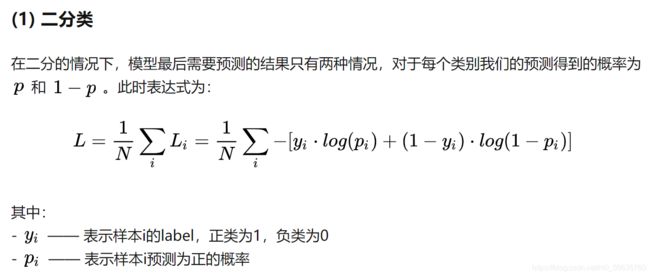(学习笔记)TensorFlow损失函数(定义和使用)详解
本文章只是学习笔记,不具有任何参考价值。
学习网站 http://c.biancheng.net/view/1903.html
在回归中定义了损失函数或目标函数,其目的是找到损失最小化的系数。
那么如何在TensorFlow 中定义损失函数,并根据问题选择合适的损失函数。
声明一个损失函数需要将系数定义为变量,将数据集定义为占位符。可以有一个常学习率或变化的学习率和正则化常数。
在下面的代码中,设m是样本数量,n是特征数量,P是类别数量。这里应该在代码之前定义这些全局参数。
m = 1000
n = 15
P = 2在标准线性回归的情况下,只有一个输入变量和一个输出变量:
# Placeholder for the Training Data
X = tf.placeholder(tf.float32,name='X')
Y = tf.placeholder(tf.float32,name='Y')
# Variables for coefficients initialized to 0
w0 = tf.Variable(0.0)
w1 = tf.Variable(0.0)
# The Linear Regression Mode1
Y_hat = X*w1 + w0
#Loss function
loss = tf.square(Y - Y_hat, name='loss')在多元线性回归的情况下,输入变量不止一个,而输出变量仍为一个。现在可以定义占位符X的大小为[m,n],其中m 是样本数量,n是特征数量,代码如下:
# Placeholder for the Training Data
X = tf.placeholder(tf.float32, name='X',shape = [m,n])
Y = tf.placeholder(tf.float32, name = 'Y')
# Variables for coefficients initialized to 0
w0 = tf.Variable(0.0)
w1 = tf.Variable(tf.random_normal([n,1]))
# The Linear Regression Model
Y_hat = tf.matmul(X, w1) + w0
# Multiple linear regression loss function
loss = tf.reduce_mean(tf.square(Y - Y_hat, name = 'loss'))在逻辑回归的情况下,损失函数定义为交叉熵。
关于交叉熵的定义参考了
https://zhuanlan.zhihu.com/p/35709485
输出的维数等于训练数据集中类别的数量,其中 P 为类别数量:
# Placeholder for the Training Data
X = tf.Placeholder(tf.float32, name='X',shape=[m,n])
Y = tf.placeholder(tf.float32, name = 'Y',shape=[m,P])
# Variables for coefficients initialized to 0
w0 = tf.Variable(tf.zeros([1,P]),name='bias')
w1 = tf.Variable(tf.random_normal([n,1]),name = 'weights')
# The Linear Regression Model
Y_hat = tf.matmul(X, w1) + w0
# Loss function
entropy = tf.nn.softmax_cross_entropy_with_logits(Y_hat, Y)
loss = tf.reduce_mean(entropy)
如果想把L1正则化加到损失上,那么代码如下:
# Placeholder for the Training Data
X = tf.Placeholder(tf.float32, name='X',shape=[m,n])
Y = tf.placeholder(tf.float32, name = 'Y',shape=[m,P])
# Variables for coefficients initialized to 0
w0 = tf.Variable(tf.zeros([1,P]),name='bias')
w1 = tf.Variable(tf.random_normal([n,1]),name = 'weights')
# The Linear Regression Model
Y_hat = tf.matmul(X, w1) + w0
# Loss function
entropy = tf.nn.softmax_cross_entropy_with_logits(Y_hat, Y)
loss = tf.reduce_mean(entropy)
lamda = tf.constant(0.8)
regularization_param = lamda *tf.reduce_sum(tf.abs(w1))
# New loss
loss += regularization_param
对于L2正则化,代码如下
# Placeholder for the Training Data
X = tf.Placeholder(tf.float32, name='X',shape=[m,n])
Y = tf.placeholder(tf.float32, name = 'Y',shape=[m,P])
# Variables for coefficients initialized to 0
w0 = tf.Variable(tf.zeros([1,P]),name='bias')
w1 = tf.Variable(tf.random_normal([n,1]),name = 'weights')
# The Linear Regression Model
Y_hat = tf.matmul(X, w1) + w0
# Loss function
entropy = tf.nn.softmax_cross_entropy_with_logits(Y_hat, Y)
loss = tf.reduce_mean(entropy)
lamda = tf.constant(0.8)
regularization_param = lamda *tf.nn.12_loss(w1)
# New loss
loss += regularization_param
对正则化L1 和L2 的理解 参考
https://www.bilibili.com/video/BV1Tx411j7tJ?from=search&seid=10856754709215282937
